It looks like you're using an Ad Blocker.
Please white-list or disable AboveTopSecret.com in your ad-blocking tool.
Thank you.
Some features of ATS will be disabled while you continue to use an ad-blocker.
Seven thousand year old Nazca-like Elk geoglyph in the Urals. Astrological/Astronomical significance
page: 120
share:
before i get started i need to credit Stirling for bringing this fascinating geoglyph to my attention in this thread, which sadly got somewhat lost
and deserved a lot more attention..
www.abovetopsecret.com...
i would also like to thank him for kindly agreeing to me starting a thread on it to bring more information on this to members here. i have used some info i posted re the elk from that thread.
Mods, i feel that a new thread on this is justified for the reasons stated above, and as the geoglyph was not the focus of the original thread, thanks.

this is a 2007 pic of the geoglyph from an article in The Huffington Post that Stirling posted..
www.huffingtonpost.com...
besides Nazca, the Elk is similar to chalk hill figures like the Uffington White Horse in England - it would have been highly visible due to the rock used to make the outline, and like the White Horse, was maybe not just intended as decoration, but more on that later..
this is the best vid i could find on the subject, it's in russian (i think) but is well worth watching for perspective - sadly i could not find it on YT so here is the link
www.disclose.tv...
Archaeologists have excavated small parts of it, and the lines used to form the shape are up to five metres wide, constructed of pale rock
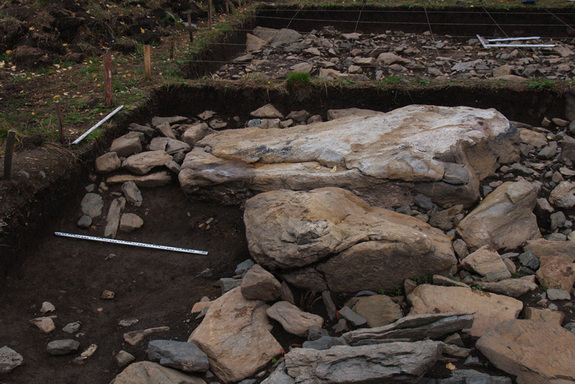
www.livescience.com...
and It's most likely between seven and nine thousand years old, easily predating Nazca and English hill figures by at least five thousand years to the best of our knowledge.
www.antiquity.ac.uk...
I was reading about the White Horse very recently in John North's "Stonehenge - Neolithic Man and the Cosmos". He explains how the general shape of the figure could have changed quite a lot over time (due to it being retouched over thousands of years - it's in a fairly densely populated populated area compared to the urals) he postulates that to draw conclusions from it we should instead look at the specific location of the figure instead.
Interestingly this elk appears from the pics in the links to be on only a slight incline, and similar to the white horse, not situated for best visibility by "locals" - after all, if they wanted to leave a mark that they could all see to it's best, there are many better slopes around to display the figure on for viewing.
North suggests that the incline of the plane that the figure is on is the key factor, and that viewing along the figure from tail to head points at aldebaran (a major star in taurus, and many think the horse was originally a bull). hence many chalk figures being astronomical/astrological markers. nothing too new there, but the perspective of ignoring the dimensions of the figure, and just taking notice of it's setting and the way it points was a somewhat fresh perspective in '96 when published.
so, not for display and viewing at all, but for providing a sightline?
Well that would certainly help the viewing of stars near the horizon...
I wonder what constellation the ancient folks of the urals referred to as the elk? which constellation does the elk's head (or antlers) point to?
After a bit more research i found a webpage regarding the big dipper/plough constellation being known as "the elk" in russia... i wonder if one were to look from the tail to the antlers we would see something like this as the seasons go by?

The outline of The Elk does not seem to bear much resemblance to the constellation of The Plough (The Big Dipper to some)
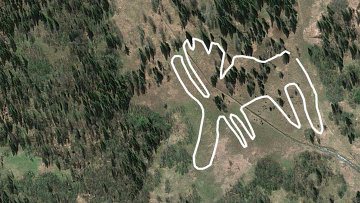
but i'm not sure that a resemblance to the constellation represented by the figure is overly important, more the significance of it.
Obviously elks (moose to those not from the USA) were hugely important to many ancient peoples - such large animals could provide huge amounts of meat compared to most game and just one kill would have gone a long way indeed. the skins would have provided raw hide or been tanned for leather, bones could be used for tools, weapons and materials for art, and the antlers make superior hammers for knapping flint and other lithics - they are still highly valued for that today (i wish i had some!)
Elk/Moose are often represented in ancient art due to the values outlined above, and were surely aintegral part of ritual and myth. Petroglyphs of them still exist in many places to bear testament to this, as do other finds - i came across these awesome ones from Alta in Norway:
two female elk pecked into rock, one of which has been painted, the other is regularly rubbed in alcohol to retatd lichen growth

this next one ties quite amazingly with the atifact that follows..
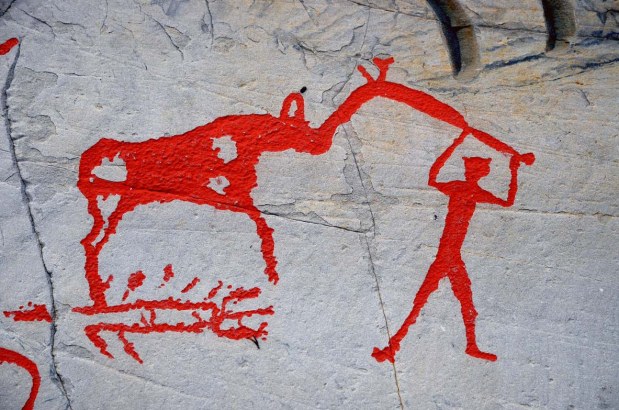
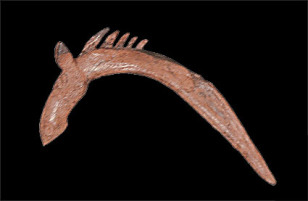
per-storemyr.net...
www.abovetopsecret.com...
i would also like to thank him for kindly agreeing to me starting a thread on it to bring more information on this to members here. i have used some info i posted re the elk from that thread.
Mods, i feel that a new thread on this is justified for the reasons stated above, and as the geoglyph was not the focus of the original thread, thanks.

this is a 2007 pic of the geoglyph from an article in The Huffington Post that Stirling posted..
www.huffingtonpost.com...
A huge geoglyph in the shape of an elk or deer discovered in Russia may predate Peru's famous Nazca Lines by thousands of years.
The animal-shaped stone structure, located near Lake Zjuratkul in the Ural Mountains, north of Kazakhstan, has an elongated muzzle, four legs and two antlers. A historical Google Earth satellite image from 2007 shows what may be a tail, but this is less clear in more recent imagery.
Excluding the possible tail, the animal stretches for about 900 feet (275 meters) at its farthest points (northwest to southeast), the researchers estimate, equivalent to two American football fields. The figure faces north and would have been visible from a nearby ridge.
besides Nazca, the Elk is similar to chalk hill figures like the Uffington White Horse in England - it would have been highly visible due to the rock used to make the outline, and like the White Horse, was maybe not just intended as decoration, but more on that later..
this is the best vid i could find on the subject, it's in russian (i think) but is well worth watching for perspective - sadly i could not find it on YT so here is the link
www.disclose.tv...
Archaeologists have excavated small parts of it, and the lines used to form the shape are up to five metres wide, constructed of pale rock

www.livescience.com...
We initially thought that the large stones outlining the figure were set to serve as the basis for the infilling and to mark the outline of the figure since they would easily be visible form the ridge. But results from Trench 2 suggest that the large stones were set on the stone strip to create a visual effect when observing the image from the ridge. As the ridge of Zjuratkul consists of white quartzite, and the same material was used for the hill figure, the figure would initially have looked white and slightly shiny against the green grass background
and It's most likely between seven and nine thousand years old, easily predating Nazca and English hill figures by at least five thousand years to the best of our knowledge.
in antiquity the stone outline would have protruded above ground, and today there is 40–50cm of humic soil over the virgin soil in the trench. The formation of soils in the high-mountain area of Lake Zjuratkul began in the very early Holocene. In conditions of gradual and uniform accumulation of humus, this soil accumulation would suggest that it took place over 7000–9000 years; i.e. from the Neolithic onwards
www.antiquity.ac.uk...
I was reading about the White Horse very recently in John North's "Stonehenge - Neolithic Man and the Cosmos". He explains how the general shape of the figure could have changed quite a lot over time (due to it being retouched over thousands of years - it's in a fairly densely populated populated area compared to the urals) he postulates that to draw conclusions from it we should instead look at the specific location of the figure instead.
Interestingly this elk appears from the pics in the links to be on only a slight incline, and similar to the white horse, not situated for best visibility by "locals" - after all, if they wanted to leave a mark that they could all see to it's best, there are many better slopes around to display the figure on for viewing.
North suggests that the incline of the plane that the figure is on is the key factor, and that viewing along the figure from tail to head points at aldebaran (a major star in taurus, and many think the horse was originally a bull). hence many chalk figures being astronomical/astrological markers. nothing too new there, but the perspective of ignoring the dimensions of the figure, and just taking notice of it's setting and the way it points was a somewhat fresh perspective in '96 when published.
so, not for display and viewing at all, but for providing a sightline?
Palaeozoological suggests that the land would likely have been unforested at the time the glyph was made.
Well that would certainly help the viewing of stars near the horizon...
I wonder what constellation the ancient folks of the urals referred to as the elk? which constellation does the elk's head (or antlers) point to?
After a bit more research i found a webpage regarding the big dipper/plough constellation being known as "the elk" in russia... i wonder if one were to look from the tail to the antlers we would see something like this as the seasons go by?

Evenk cosmology tells how the Sun was captured and carried about the sky by the cosmic Elk (Big Dipper constellation). The Elk and her daughter (Little Dipper) were hunted by the Bear or Hunter (the bright star Arcturus and Bootes). The Elk fled to the Sea and became Seli/Holi the Mammoth.
The outline of The Elk does not seem to bear much resemblance to the constellation of The Plough (The Big Dipper to some)

but i'm not sure that a resemblance to the constellation represented by the figure is overly important, more the significance of it.
Obviously elks (moose to those not from the USA) were hugely important to many ancient peoples - such large animals could provide huge amounts of meat compared to most game and just one kill would have gone a long way indeed. the skins would have provided raw hide or been tanned for leather, bones could be used for tools, weapons and materials for art, and the antlers make superior hammers for knapping flint and other lithics - they are still highly valued for that today (i wish i had some!)
Elk/Moose are often represented in ancient art due to the values outlined above, and were surely aintegral part of ritual and myth. Petroglyphs of them still exist in many places to bear testament to this, as do other finds - i came across these awesome ones from Alta in Norway:
two female elk pecked into rock, one of which has been painted, the other is regularly rubbed in alcohol to retatd lichen growth

this next one ties quite amazingly with the atifact that follows..


A c. 40 com long elk-headed pole made from bone from a 7500 year old burial site in Russian Karelia. Digitally enhanced photo of poster exhibited at Alta Museum
per-storemyr.net...
edit on 25-2-2013 by skalla
because: title
edit on 25-2-2013 by skalla because: title again
edit on 25-2-2013 by skalla because: title yet again,
think i'm happy now
well, i ran out of space at just about the right time to stop me rambling! thanks again to Stirling for the heads-up on this, and i hope you enjoy
reading this as much as i enjoyed finding out about it and researching the thread
ETA: i forgot to add a map - the location is marked by the red square, appropriately enough for a site in russia
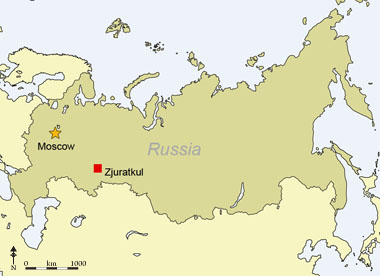
ETA: i forgot to add a map - the location is marked by the red square, appropriately enough for a site in russia

edit on 25-2-2013 by skalla because: (no reason given)
reply to post by Lazarus Short
they are referred to by some as elk, by others as moose, it depends where in the world you come from, as i pointed out in the OP.
the articles relating to the OP referred to it as an elk, hence my predominant use if that term.
any other thoughts on this monument?
they are referred to by some as elk, by others as moose, it depends where in the world you come from, as i pointed out in the OP.
the articles relating to the OP referred to it as an elk, hence my predominant use if that term.
any other thoughts on this monument?
reply to post by skalla
After I posted I remembered the confusion over Elk and Moose. IIRC, the American "Elk" is a member of the deer family, but misnamed compared to the old world Elk, and maybe for Moose too. Anyway, it makes me think of similar things over here, the geoglyph I mean - one of many enigmas to be solved and placed in context.
After I posted I remembered the confusion over Elk and Moose. IIRC, the American "Elk" is a member of the deer family, but misnamed compared to the old world Elk, and maybe for Moose too. Anyway, it makes me think of similar things over here, the geoglyph I mean - one of many enigmas to be solved and placed in context.
soo much to go through here
thanks
now how do we fit in that meteor to this find lol
thanks
now how do we fit in that meteor to this find lol
reply to post by thePharaoh
dude please, no jokes when i'm drinking a cuppa, it tastes too good to choke on it
ETA: maybe it was trying to replicate this:

TPTB are clearly keeping something from us - was the meteor really dung from the great cosmic moose? i think we should be told... i pity the russians who's windows were blown in by that s##t
dude please, no jokes when i'm drinking a cuppa, it tastes too good to choke on it
ETA: maybe it was trying to replicate this:

TPTB are clearly keeping something from us - was the meteor really dung from the great cosmic moose? i think we should be told... i pity the russians who's windows were blown in by that s##t
edit on 26-2-2013 by skalla because: (no reason given)
edit on 26-2-2013 by skalla
because: (no reason given)
The geo looks like a moose while the cave figures look more like elk to me.
Since it doesn't fit the big dipper, what constellations is it highlighting? A local/russian "Elk" constellation trace? if so, what constellations does it encompass?
Since it doesn't fit the big dipper, what constellations is it highlighting? A local/russian "Elk" constellation trace? if so, what constellations does it encompass?
reply to post by atsci
Hi Atsci, it was pretty late when i made the thread and i was running out of space too, so i'll take a chance to go into the moose/elk thing in a bit more detail.
it's those creatures with the typically big palm shaped antlers, rather than the the more branching deer like antlers.
in Europe it's typically termed an Elk, whereas to folk from the US it's a moose... not sure about elsewhere.
only males (bulls) have the antlers; where as the females, known as cows, do not.
here be a male:
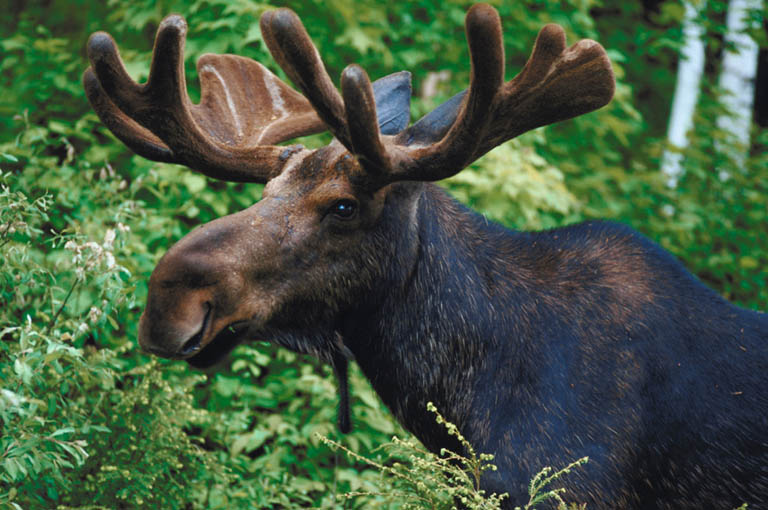
en.wikipedia.org...
regarding astronomical alignment, i would like to be clear that i am specualting, but offer the Elk's position in Russian folk lore and it's importance in antiquity, it's relatively poor viewing position and parallels with the White Horse of Uffington as reasons for this. i dont have enough info on "The Elk", or enough skill in maths and astronomy (and Russian!) to be more firm the matter of sightlines to constellations unfortunately...
The Uffington White Horse:

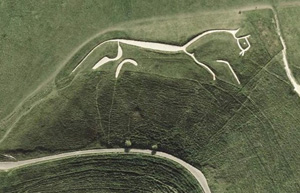
as you can see, this is not best placed for viewing at all, especially as it is right by another slope that would offer a far far superior position if it was meant for display. Hence John North's proposal as outlined in the OP.
as you can hopefully see (i sure can) the horse (which it is argued by some including John North was a bear in antiquity, others say a cat or a dragon etc) does "bear" more than a passing resemblance to the constellation of Taurus..

just rotate the pic anti-clockwise about 45 degrees.
It has been retraced many many times over the years as well as parts being over grown at times. the sight line to Aldebaran, the major star in Taurus runs from a "lump" where it is suggested the penis was, along to it's eyes.
Here is the wikipedia link of the horse, though it aint up to much, i'm taking quite a lot of time over this reply as i'm very interested in the subject but time prevents me from finding a better link, you should find an absolute wealth of info all over the web.
en.wikipedia.org...
back to the moose-elk thing... this is not well placed for viewing either, it's only on a slight incline - check the vid link (disclosetv) and pic links (livescience) in the OP. The Ural mountains would surely have offered countless slopes and hillsides that would offer better canvases for viewing a piece of art.

and the plough..
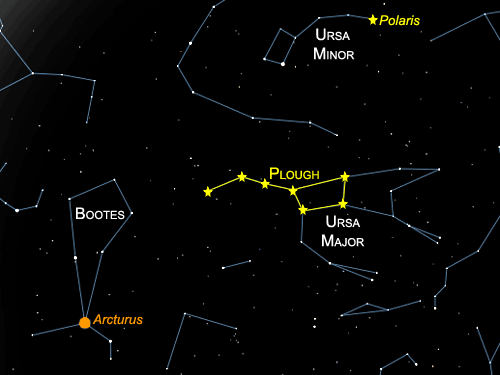
with a rough date of construction of approx 7000 to 9000 years before present (White Horse being around about 2500-3000 before present, Nazca being about 500 AD/common era as far as i know - i'm sure someone here can elucidate) i am personally not so concerned that The Elk does not look like the plough. artistic abilities over such a large area, let alone their ability to survey an plot 5000bc or earleir would have been in the earliest stages - as far as i know this is the oldest geoglyph on earth.
now it did occur to me that this may infact represent The Great Bear/Ursa Major constellation, which the Plough is a part of. That particular figure "obviously" looks far like it. while the folklore i quoted in the OP draws a distinction between the Elk and the bear cosmologically, many thousands of years have gone by in the meantime.
On reflection, and with the space to illustrate the question, i reckon it's far more likely that Ursa Major is being represented here.
However, without being able to check a sightline that will have moved since antiquity, i am of course speculating on the basis of my arguments above
Hi Atsci, it was pretty late when i made the thread and i was running out of space too, so i'll take a chance to go into the moose/elk thing in a bit more detail.
it's those creatures with the typically big palm shaped antlers, rather than the the more branching deer like antlers.
in Europe it's typically termed an Elk, whereas to folk from the US it's a moose... not sure about elsewhere.
only males (bulls) have the antlers; where as the females, known as cows, do not.
here be a male:

en.wikipedia.org...
regarding astronomical alignment, i would like to be clear that i am specualting, but offer the Elk's position in Russian folk lore and it's importance in antiquity, it's relatively poor viewing position and parallels with the White Horse of Uffington as reasons for this. i dont have enough info on "The Elk", or enough skill in maths and astronomy (and Russian!) to be more firm the matter of sightlines to constellations unfortunately...
The Uffington White Horse:


as you can see, this is not best placed for viewing at all, especially as it is right by another slope that would offer a far far superior position if it was meant for display. Hence John North's proposal as outlined in the OP.
as you can hopefully see (i sure can) the horse (which it is argued by some including John North was a bear in antiquity, others say a cat or a dragon etc) does "bear" more than a passing resemblance to the constellation of Taurus..

just rotate the pic anti-clockwise about 45 degrees.
It has been retraced many many times over the years as well as parts being over grown at times. the sight line to Aldebaran, the major star in Taurus runs from a "lump" where it is suggested the penis was, along to it's eyes.
Here is the wikipedia link of the horse, though it aint up to much, i'm taking quite a lot of time over this reply as i'm very interested in the subject but time prevents me from finding a better link, you should find an absolute wealth of info all over the web.
en.wikipedia.org...
back to the moose-elk thing... this is not well placed for viewing either, it's only on a slight incline - check the vid link (disclosetv) and pic links (livescience) in the OP. The Ural mountains would surely have offered countless slopes and hillsides that would offer better canvases for viewing a piece of art.

and the plough..

with a rough date of construction of approx 7000 to 9000 years before present (White Horse being around about 2500-3000 before present, Nazca being about 500 AD/common era as far as i know - i'm sure someone here can elucidate) i am personally not so concerned that The Elk does not look like the plough. artistic abilities over such a large area, let alone their ability to survey an plot 5000bc or earleir would have been in the earliest stages - as far as i know this is the oldest geoglyph on earth.
now it did occur to me that this may infact represent The Great Bear/Ursa Major constellation, which the Plough is a part of. That particular figure "obviously" looks far like it. while the folklore i quoted in the OP draws a distinction between the Elk and the bear cosmologically, many thousands of years have gone by in the meantime.
On reflection, and with the space to illustrate the question, i reckon it's far more likely that Ursa Major is being represented here.
However, without being able to check a sightline that will have moved since antiquity, i am of course speculating on the basis of my arguments above
edit on 26-2-2013 by skalla because: clarity, typos etc
edit on 26-2-2013 by skalla because: clarity
edit on
26-2-2013 by skalla because: spotted typos etc
reply to post by skalla
Interesting presentation.
It doesn't surprise me that those back in the day would create such a display. We see this type of early art also in early cave art and other geoglyph locations around the globe.
S & F
Interesting presentation.
It doesn't surprise me that those back in the day would create such a display. We see this type of early art also in early cave art and other geoglyph locations around the globe.
S & F
reply to post by SLAYER69
Thanks for stopping by, i totally agree that it's no surprise that such works were made by our ancestors, beit as a way of studying the heavens, celebrating their cosmology or putting a culture's imprint on the landscape.
It also makes me think of earth-zodiacs, and i have to wonder if we may soon see other figures that possibly represent consellations being found in the urals.
i guess that time will tell
Thanks for stopping by, i totally agree that it's no surprise that such works were made by our ancestors, beit as a way of studying the heavens, celebrating their cosmology or putting a culture's imprint on the landscape.
It also makes me think of earth-zodiacs, and i have to wonder if we may soon see other figures that possibly represent consellations being found in the urals.
i guess that time will tell
edit on 26-2-2013 by skalla because: obligatory typo
I'm an artist and I don't believe that the Uffington horse figure actually depicts a horse.
I think it is likely a large cat of some kind, maybe even a sabre toothed cat. The animal is beautifully outlined in its design, but forward of the ears the head is proportioned and positioned like that of a cat. There is no way that the artists who made the rest of the body could possibly have meant the head to be a horse's head.
Don't know where that fits into the mythology of ancient times. Did ancient Britons have something akin to the "jaguar societies" of Central America? I know it is believed that the sabre toothed cat, particularly, is assumed to have been extinct in Europe before man came along. But . . . religion being what it is . . .
www.telegraph.co.uk...
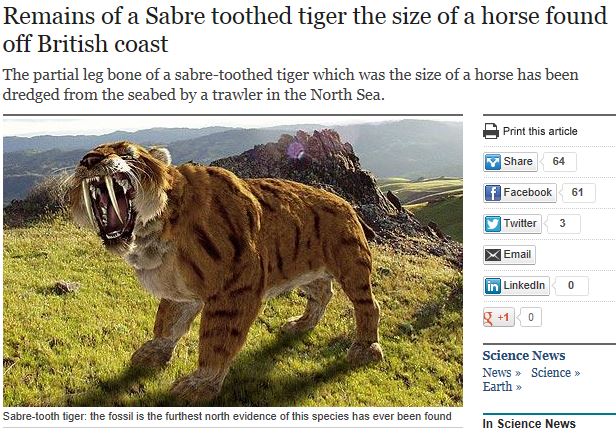
I think it is likely a large cat of some kind, maybe even a sabre toothed cat. The animal is beautifully outlined in its design, but forward of the ears the head is proportioned and positioned like that of a cat. There is no way that the artists who made the rest of the body could possibly have meant the head to be a horse's head.
Don't know where that fits into the mythology of ancient times. Did ancient Britons have something akin to the "jaguar societies" of Central America? I know it is believed that the sabre toothed cat, particularly, is assumed to have been extinct in Europe before man came along. But . . . religion being what it is . . .
www.telegraph.co.uk...

edit on 27-2-2013 by ipsedixit because: (no reason given)
The meteor was Rocky to the glyphic Bullwinkle.
Seriously though, wow that's pretty old, and very very cool.
Awesome find my friend!
Seriously though, wow that's pretty old, and very very cool.
Awesome find my friend!
reply to post by skalla
Saw this linked in your signature and now have to star and flag and bump it. You put together some really good OPs full of data and covering many of the bases. Nice work.
Saw this linked in your signature and now have to star and flag and bump it. You put together some really good OPs full of data and covering many of the bases. Nice work.
edit on 6-11-2013 by Aleister because: (no reason given)
new topics
-
An Apology From the Dunderbeck Sausage Company
Music: 1 hours ago -
Tucker on Joe Rogan talking Kona Blue and UFOs
Aliens and UFOs: 1 hours ago -
Remember These Attacks When President Trump 2.0 Retribution-Justice Commences.
2024 Elections: 2 hours ago -
Predicting The Future: The Satanic Temple v. Florida
Conspiracies in Religions: 2 hours ago -
WF Killer Patents & Secret Science Vol. 1 | Free Energy & Anti-Gravity Cover-Ups
General Conspiracies: 4 hours ago -
Hurt my hip; should I go see a Doctor
General Chit Chat: 5 hours ago -
Israel attacking Iran again.
Middle East Issues: 6 hours ago -
Michigan school district cancels lesson on gender identity and pronouns after backlash
Education and Media: 6 hours ago -
When an Angel gets his or her wings
Religion, Faith, And Theology: 7 hours ago -
Comparing the theology of Paul and Hebrews
Religion, Faith, And Theology: 8 hours ago
top topics
-
The Democrats Take Control the House - Look what happened while you were sleeping
US Political Madness: 12 hours ago, 18 flags -
In an Historic First, In N Out Burger Permanently Closes a Location
Mainstream News: 14 hours ago, 16 flags -
Biden says little kids flip him the bird all the time.
Politicians & People: 12 hours ago, 9 flags -
Man sets himself on fire outside Donald Trump trial
Mainstream News: 12 hours ago, 9 flags -
Michigan school district cancels lesson on gender identity and pronouns after backlash
Education and Media: 6 hours ago, 7 flags -
WF Killer Patents & Secret Science Vol. 1 | Free Energy & Anti-Gravity Cover-Ups
General Conspiracies: 4 hours ago, 7 flags -
Pentagon acknowledges secret UFO project, the Kona Blue program | Vargas Reports
Aliens and UFOs: 9 hours ago, 6 flags -
Israel attacking Iran again.
Middle East Issues: 6 hours ago, 5 flags -
Remember These Attacks When President Trump 2.0 Retribution-Justice Commences.
2024 Elections: 2 hours ago, 5 flags -
Boston Dynamics say Farewell to Atlas
Science & Technology: 9 hours ago, 4 flags
active topics
-
The Democrats Take Control the House - Look what happened while you were sleeping
US Political Madness • 69 • : Astyanax -
The Good News According to Jesus
Religion, Faith, And Theology • 4 • : randomuser2034 -
Man sets himself on fire outside Donald Trump trial
Mainstream News • 44 • : randomuser2034 -
Israel attacking Iran again.
Middle East Issues • 29 • : ToneD -
Are you ready for the return of Jesus Christ? Have you been cleansed by His blood?
Religion, Faith, And Theology • 22 • : glend -
Predicting The Future: The Satanic Temple v. Florida
Conspiracies in Religions • 7 • : randomuser2034 -
Tucker on Joe Rogan talking Kona Blue and UFOs
Aliens and UFOs • 1 • : NoCorruptionAllowed -
An Apology From the Dunderbeck Sausage Company
Music • 0 • : TheMichiganSwampBuck -
Comparing the theology of Paul and Hebrews
Religion, Faith, And Theology • 1 • : glend -
MULTIPLE SKYMASTER MESSAGES GOING OUT
World War Three • 56 • : cherokeetroy
20
